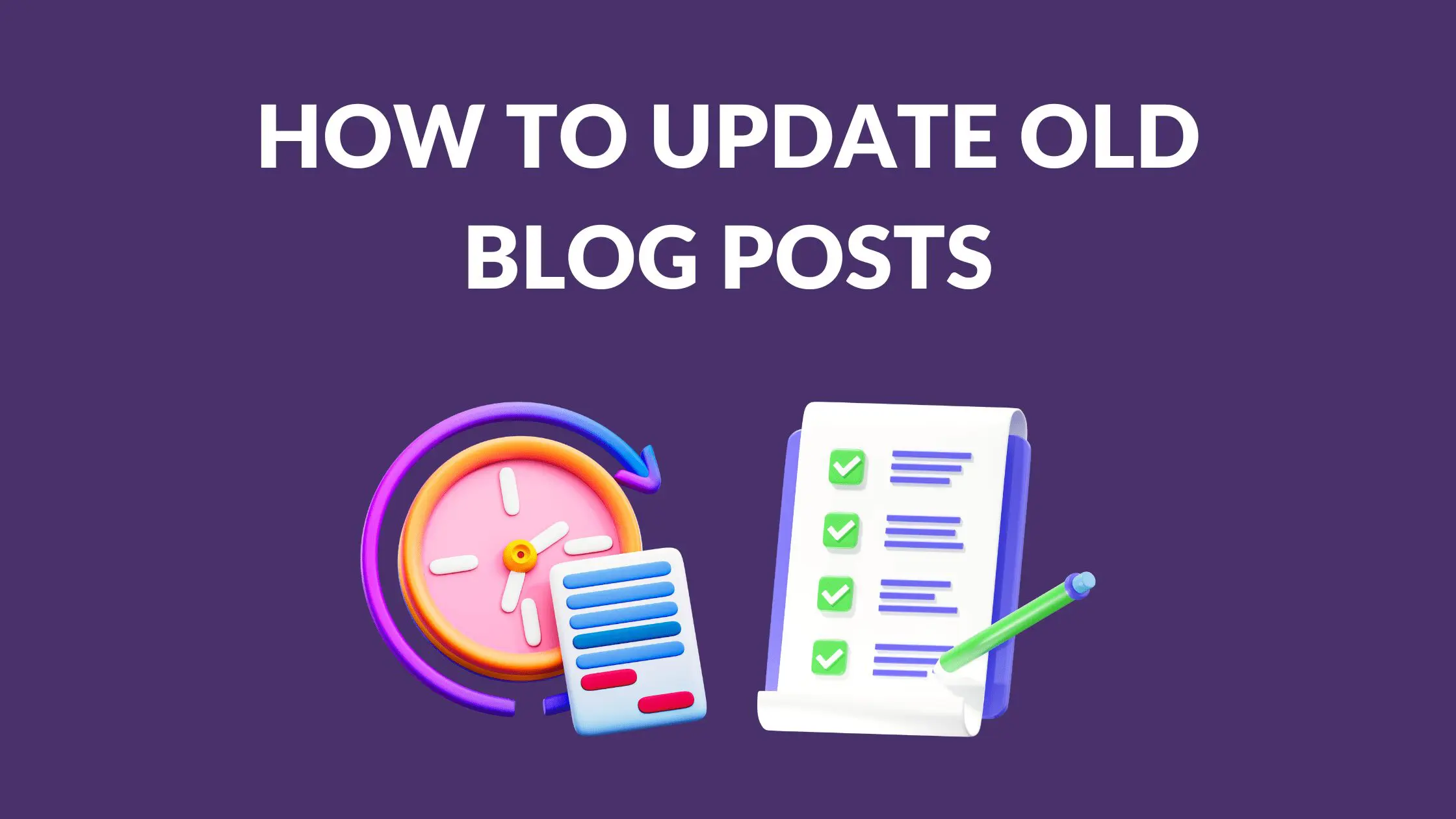How to Research Your Blogging Competitors

Written by Casey Botticello
Disclosure: Some of the links below are affiliate links, meaning that at no additional cost to you, I will receive a commission if you click through and make a purchase. Read our full affiliate disclosure here.
The internet is full of people putting themselves out there selling products, creating content, and blogging their hearts out. You should know—you’re one of them!
Whether you’re selling a product or writing a great article, the aim of putting anything on the internet is to have someone else see it.
After all, you want as many people as possible to get value from what you’re making or doing!
It’s vital to carry out an analysis of your competitors and their strengths and weaknesses in order to gain the upper hand when it comes to attracting traffic.
In this article, you’ll learn exactly what competitive analysis entails, as well as how to research your blogging competitors effectively!
What is a Competitive Analysis in Blogging?

Simply speaking, competitive analysis is an analysis of your competitors and how they operate.
Competitive analysis can include things like:
- Reading product pages or articles on your competitors’ websites
- Looking at your competitors’ pricing
- Looking at your competitors’ target audiences and where they get their traffic from
- Looking at your competitors’ advertising methods.
Because we’re doing a competitive analysis on competition in the blogging world, some of the points above are going to be more relevant than others.
For example, not many bloggers sell their products through a blog; most make money from ad revenue or affiliate marketing.
However, the technique is still applicable! By understanding why your competitors are succeeding, you can apply the same methods to your own blog.
This will help drive more traffic to your site and potentially divert it from other sites. After all, that’s the ultimate goal— to steer more people toward your blog, and away from the competition!
How to Research Blogging Competitors

The first step in any competitive analysis is general research. You can’t analyze your blogging competitors if you don’t know who they are!
This step is fairly obvious because your competitors will be blogging about the same thing as you. Thus, you can start off by looking up a few key topics you’ve written about recently.
Obviously, the closer your search term is to something you’ve actually written about, the better results it will return in terms of finding your competitors. Narrow down your competition by using more specific terms!
Try and build up a shortlist of blogs that are closest to the content you produce. Ideally, they should be reasonably successful so you can learn more from them.
Don’t compile too many competitors all at once, or you may burn yourself out while carrying out the analysis. To start with, five should be plenty!
How to Do a Competitive Analysis

1. Select Your Competitors

This is the step we’ve just talked about above!
How do you select your competitors? Well, they have to be similar to you– because otherwise, they’re not your competitors.
If you have a tough time figuring out who your direct competitors are, here are some key things you should check:
- They sell a similar product
- They blog about similar content
- They are sponsored by similar corporations
- They have a similar business model. For instance, don’t look at people who sell from their own inventory if you get your revenue from affiliate marketing
- They aim at a similar target audience to you. If you’re a blog that markets toward the demographic of 30–40-year-old women, don’t select a blog that markets toward 18–21-year-old men.
You also want to make sure that you’re selecting a variety of competitors. Don’t pick only people who are new to the market, as you’ll miss out on what’s made long-standing players successful.
Don’t pick only old players, either! Innovation typically comes from new entrants to a market, and you want to get in on that as soon as you can.
2. Segment And Optimize

Collecting information about your competitors is no good if it’s all jumbled!
To help you carry out the best possible competitive analysis, make sure the information you collect is stored in an accessible and organized way.
One of the best ways to do this is by using a spreadsheet. If you have a large spreadsheet with a separate worksheet for either each competitor or blog element (or both), you’ll be able to see the information you need at a glance.
You might also need to think about how you want to organize this information at this stage. The best way to do this is to consider what you are trying to improve.
If you’re trying to improve the number of people who visit your blog for the first time, you’ll want to take a close look at your competitors’ advertising and search engine optimization.
If you’re trying to improve the number of people who return to your blog after their initial visit, you’ll likely want to pay careful attention to how your competitors write their content and how they market to existing visitors.
If you don’t have anything you want to focus on in particular, here are some good things to have on the list:
- Search engine optimization or SEO
- Loading time for pages
- Content quality and frequency
- Content type and length
- Content marketing tactics
- Rate of content sharing by viewers
The other important thing about storing this content is that you can annotate or modify it easily. Websites aren’t static, and you’ll want a good place to put all of your notes!
3. Determine Competitor Types

Understanding which of your competitors are new to the market and which are seasoned can help inform your analysis.
For example, if you know your competitor is new to the market and they already have a very large market share (that is, a large proportion of viewers consuming their content rather than other competitors’), then that is a notable sign.
You should definitely be looking at what these competitors are doing, especially since they’ve broken through so quickly!
This realization wouldn’t have happened if you just assumed that the competitor’s lengthy play in the market is the reason for their large market share.
Consider as well who your direct, indirect, or substitute competitors are.
Direct competitors are those who write about the same things as you and target the same audience.
Meanwhile, indirect competitors don’t necessarily have similar content to you, but they still could satisfy your audience’s needs. Keep an eye on them, because they can always become your direct competition in the future.
Lastly, there are substitute competitors. While they have vastly different content, they also target your audience. Analyzing them could provide you with additional, valuable insights as well.
4. Identify Your Competitor’s Positioning, Strengths, & Weaknesses

The next step is to look at a few key aspects of your competitors. We’re going to touch on some key ones here, but these are by no means all of the aspects you might want to look at:
SEO Rankings
If a blog has been better optimized for SEO, it’s more likely to show up first in search results for related terms.
Obviously, this drives people to the site more frequently than to a site that isn’t as optimized. Understanding which of your competitors has the best SEO will inform you about who to look at to best improve your own optimization efforts.
Other than that, comparing your own SEO efforts to that of your competitors is a great way to flag where your website is lacking.
Site Traffic
Higher site traffic, in tandem with optimized on- and off-page SEO, results in a better ability to attract initial viewers.
Site traffic metrics also pick up users coming in from areas other than organic search engine traffic. If a site has high site traffic but poor SEO strategy, then it must have a very effective alternative promotional strategy such as social media or paid ads.
Site traffic analytics such as those provided by Google Analytics can also pick up how many people return to visit the site after their initial visit.
Load Time
Loading time for a website or page can make all the difference between someone consuming your content or giving up in frustration.
Looking at the load time for your competitors’ pages can tell you if you need to tinker with how your own blog is hosted on the web.
Mobile Responsiveness
Similar to load time, being able to cope with mobile users is hugely important in today’s age of smartphones.
If a website has poor mobile responsiveness, it loses a lot of traffic from casual browsers who are on their phones.
Looking at competitors with good mobile responsiveness can give you ideas on how to alter your own website and increase its mobile friendliness.
Quality Of Content
Are your competitors putting out better content than you? If so, how are they doing it? Does their content get them more page views or good reviews?
Content quality is an increasingly vital factor to consider when analyzing your competitors in 2023!
Frequency Of Content
How frequently do your competitors post an article on their blogs?
This metric is best analyzed in tandem with content quality. If your competitors are continuously churning out quick, lower-quality posts– but they’re still getting lots of interaction– this can tell you how your target audience engages with content best.
Length Of Content
Bite-sized or essay-length? Again, this is an important thing to consider when learning about how your competitors engage your target audience.
If competitors with shorter content tend to have better page traffic, it might indicate that your target audience prefers engaging with short and snappy posts rather than longer articles.
Number Of Shares
Carrying out your own promotion is important, but having your visitors promote you is even better!
Examining the number of shares on a competitor’s page is a great way to see how many of the viewers are taking value out of the page and recommending it to other people.
If your competitors have a high number of social shares, it’s a definite invitation to take a closer look at their pages.
5. Determine Your Competitive Advantage and Offerings

Now that you know so much about your competitors, evaluate your own blog. How is it different?
Generally speaking, your blog must have a key selling point that is different from other blogs in some way.
Since you have analyzed your competitors’ content, you’ll now have a better idea of what exactly that selling point is likely to be.
Comparing your own metrics to those of the competitors you analyzed in the previous step is also insightful, and will help you to plan better.
This way, you can see if you have a clear lead in any particular area– helping you refine your target audience and strategy.
6. Understand How Your Competitors Market Their Products

Advertising is an important part of attracting readers to your blog.
It’s essential that you understand how your competitors are advertising, and see if you can adopt some strategies or innovate and advertise in new and better ways.
Finding ads for your competitors by combing through their social media profiles and websites is a great way to start.
Pay attention to how they are keeping their audience around. Are they using a mailing list? A Discord server? An online forum?
7. Do a SWOT Analysis

SWOT stands for “Strengths, Weaknesses, Opportunities, and Threats”.
It’s important at this stage to carry out a SWOT analysis on your own business or content to determine how you can best grow and progress.
Now that you understand your and your competitors’ strengths and weaknesses, you can fill in the first two categories fairly easily.
From there, look at how these strengths and weaknesses interact. If you’re strong in an area where your competitors are weak, that’s a good opportunity to emphasize that aspect.
If both you and all of your competitors are weak in a particular area, then that’s also an awesome opportunity to innovate and get ahead!
The same idea applies to looking at threats.
Are there areas you are weak in that others could fill? If so, make sure that you take steps to safeguard against any potential competitive attacks around these aspects.
The Best Tools for Blog Competitive Analysis

For SEO, many Reddit users and other sources recommend Spyfu and SEMRush.
These tools will allow you to keep an eye on how keywords various sites are ranking for, as well as to gain a general idea of traffic levels and backlinks (linking from other websites) around the web.
To keep an eye on what your competitors are doing with their ads, some recommend the tool AdPlify, which can help you keep an eye on your competitors’ advertising methods. SEMRush can also pick up on your competitors’ ads.
Understanding where your competitors are getting their traffic from is also useful; you can do this by monitoring their backlinking.
Ahrefs is widely regarded as a good tool for for this, as it will show you what other sites are linking to your competitors and funneling traffic to them.
If you’re also interested in tracking social media profiles, minter.io can help you gain some data about them.
However, despite the popularity of these tools, you shouldn’t underestimate the value of manual analysis!
If you decide to analyze your competition manually, you’ll be in the company of many other blog owners who also prefer doing the same thing.
Conclusion
Performing competitive analysis and market research on your blogging competitors is key to making your own blog pop and attract more viewers.
Make sure that you choose relevant competitors, and that you thoroughly analyze and scrutinize their strengths and weaknesses (along with your own) so that you can complete a SWOT analysis. This will give you a clearer direction to try and grow in!
With the steps you’ve just learned in this article, you’ll now be better equipped at optimizing your blog’s performance and blowing the competition out of the water. Best of luck with your blog in 2023!



